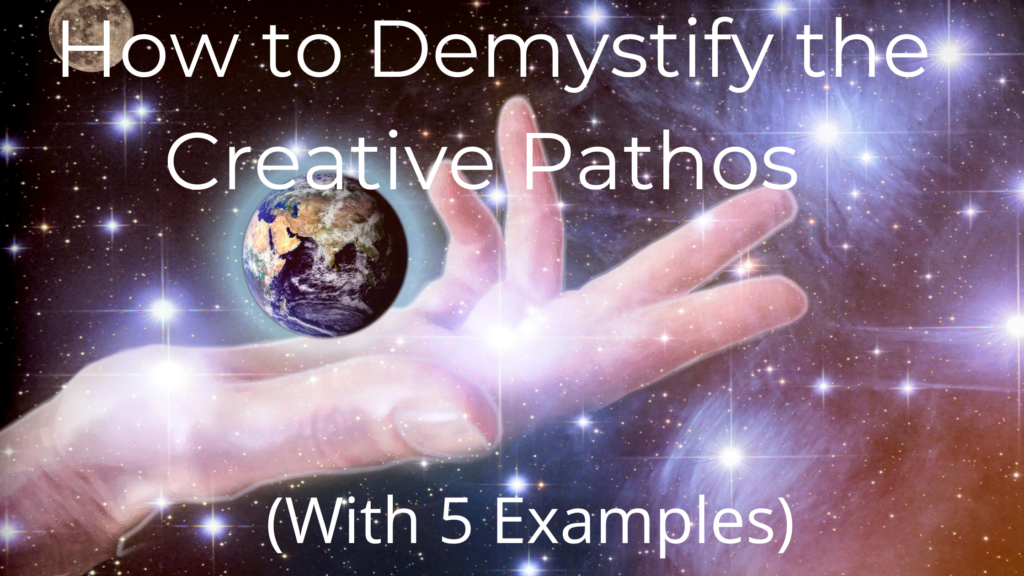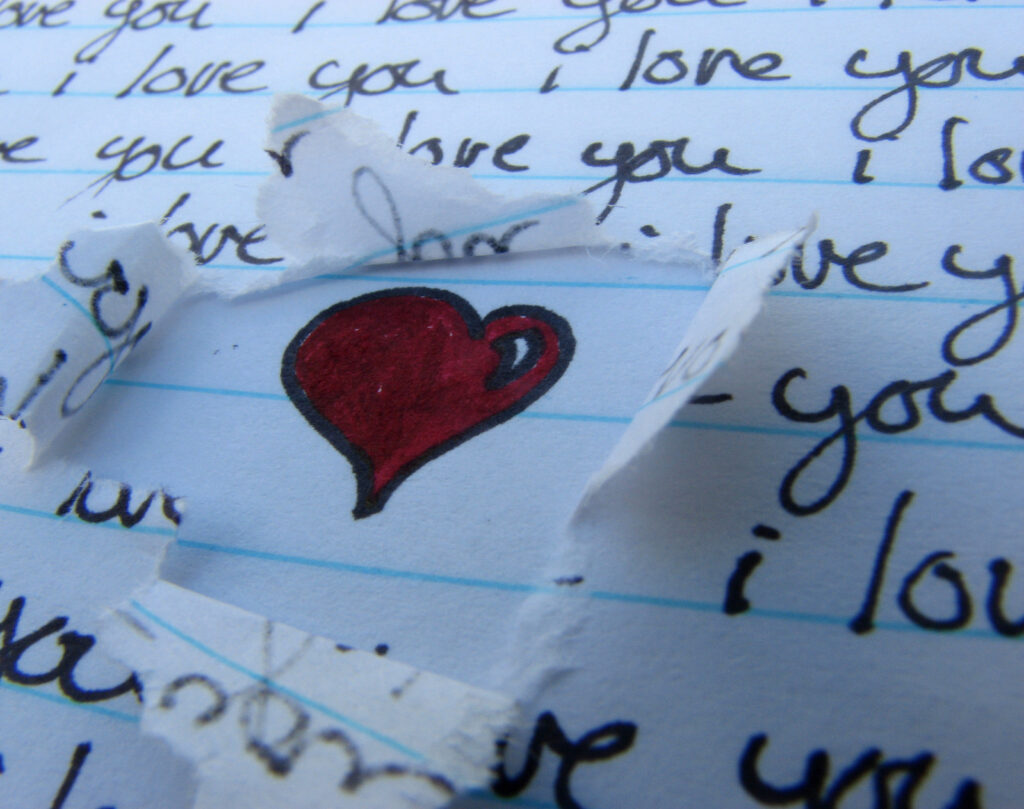

Comedian, Tina Fey’s book, Bossypants, described her first day of Kindergarten. She told how she was busy coloring as a new classmate joined her table. Artwork finished, she showed it to her new tablemate.
(RIP!)
He tore her page in two detonating a mine in her creative mind. Holding her halved picture, Tina’s nasty jab to the boy’s jaw snapped her fantasy into Round One of an endless fight. Yet her punch blocked a return to creative infancy.
A pathos had formed.
Pathos is an emotional swaying of an audience.
That emotion becomes Fey’s life-long guidepost.
Is it yours?
Spliced Analogy
These five famous thoughts muse creativity to unveil champions and chumps. A businessman and two artists are aloof antagonists of a creative spirit. It’s a pathos built from those grasping to define creativity. It takes a clever ear to hear the missed notes in their thoughts. But Tina’s bout triggered a fighter. Likewise, accept the challenge to wrestle with these words below.
Call it detective work. Break apart these sentiments. Splice together the wires of creative circuitry to reunite us.

Unity not Diversity
In creativity, diversity divides us. Creativity brings us together. We’re all connected to the same source that gives our ideas authenticity.
Dr. Samuel says three aspects are necessary to release creative potential. The final phase of unleashing creativity comes through developing an appreciation. Diversity appreciation connects you to another’s unique life experiences. The central idea is that these experiences tell of universal life lessons.
Complementary not Competitive
The cultural art contest is how business understands the creative process. But contests crumble the collective consciousness. To win prizes in creativity, do the work, but compete against no one. Every piece of art reveals a different part of the busted vase of values.
Art is never a competition, Houston painter, Byrne Smith expressed on his blog. He also explained how the Impressionist movement started. It overlooked the idea of art as competition. These now-famous painters displayed their own rejected pieces, and the movement took off.
If you hold up your piece of art. It reflects the same light source as mine. Make your art its best. That’s the way the two pieces will sync into one value-expression.
Inclusive not Exclusive
Dr. Michael Kirton explains, everyone can be artistic and creative. Forget the all-pro line-ups, superstars, and power elites. They’re not the sole population of this place called, Creativeland. Creativity contours a level playing field. Add authenticity to your own life experience to secure your initiation. That’s what gets everyone into the tribe.
Demystification and Debunking
A lie is a lie, and experience shows you that. But your truth inside you outshines any deception. You demystify and debunk a thought by digging through to its buried bias.
The multicolored Lego house that drops from the table shatters into many pieces. Yet, that’s odd. You find two interlocking blocks amid the aftermath. Discoveries such as these are what you’re searching for in this activity.
Pull away the pieces that can’t withstand the stress of standing alone.
The Exercises
Well, here are the directions to uncover hidden agendas behind discussions of creativity. A poet, novelist, painter, scientist, and entrepreneur share their perceptions of creative moments.
These quotes talk about the flow state, attitudes, and temperaments in general. Be wary of the elitism and other myths surrounding creativity ripe in our culture.
Use this practice to call them out and tear into other stereotypes.
- Read and study the statement.
- Ponder the message and look for hidden assumptions.
- Harmonize your experience with the idea.
- Rewrite the statement if fixable to reflect your authentic experiences.
When finished, you’ll see a universal truth and a personal conviction unveiled. The false creative pathos needs to drop to shatter on the tile floor of your experiences.
Five Quotes (Examples)
Two to Untangle
- Read
Quote 1:
I was never really insane except upon occasions when my heart was touched.
-Edgar Allan Poe
- Reflect
Here’s a connection to the author, Pearl S. Buck’s impression of artists in a quote. Creative people are abnormal. Why? She infers they are hypersensitive to emotion in sensory experiences. It seemed Poe felt his senses were so overwhelmed that they interrupted his life routine.
- Rewrite or add.
I relish thinking about creativity as a force that breaks the boundaries of what is.
- Read
Quote 2:
The truly creative mind in any field is no more than this: A human creature born abnormally, inhumanly sensitive. To him… a touch is a blow, a sound is a noise, a misfortune is a tragedy, a joy is an ecstasy, a friend is a lover, a lover is a god, and failure is death.
-Pearl S. Buck
- Reflect
True, creativity is risky. It breaks boundaries and makes its own rules. It writes its own standards. But to say a creative person is abnormal ignores the question of who decides what is normal. Plus, being creative does not make you part of an elite group. I can hear the starving, emotional, suffering artist stereotype.
No one wins when you make creativity a club. Artists belong to a universal tribe. You and I create with the same spirit that fills us up.
- Fix
Buck portrays the artist as someone who goes to unhealthy extremes. Readers hear an exaggeration of a lover turning into a god. Exaggerating life experiences,
Buck romanticizes the creative spirit. Although it comes with a cost. Creativity is no longer free for everyone. This is false. As Picasso says, every child is born an artist. St. Exupery, in his children’s book,
The Little Prince, puts into a story Picasso’s viewpoint. Maturing, we lose a creative connection with the Divine.
These two untangled quotes above are antonyms of creativity.

Look at three examples of creative reinforcement.
Cherished poetess, Maya Angelou starts off this section of creative redemption.
- Read
Quote 3:
You can’t use up creativity. The more you use, the more you have.
-Maya Angelou
- Reflect
Creativity is for everyone, but it needs use to multiply. There’s the analogy of the parable the sower and of the owner and his coins wrapped into one. Investment in creativity has far-reaching dividends.
- Rewrite.
Creativity is a store that has a never-ending line of products. That’s provided you never return them dissatisfied.
- Add
Creativity is like a bubbling cauldron. Stir it with trust. What’s brewing will surprise you.
Live a productive, creative life. Rest your artistic muscles with a playful innocence.
Breathe in image pools, rant on the reflective page, and romance the circulatory core. If so, you’ll never meet creative streams without a prize catch.
- Read
Quote 4:
Creativity is just connecting things. When you ask creative people how they did something, they feel a little guilty because they didn’t really do it, they just saw something. It seemed obvious to them after a while. That’s because they were able to connect experiences they’ve had and synthesize new things.
-Bill Gates
- Reflect.
Bill Gates’s nod to Napoleon Hill’s Infinite Intelligence. Hill believed our ideas gave off vibrations.
These connected with ideas wanting creators to bring them into being.
- Rewrite.
A connection is creativity. Put your finger in the creative electrical life socket. Survive the aftershocks? The combinations will tantalize.
- Add
Be grateful. Drink in images, engage in fun, and you have made a connection to universal consciousness.
- Read
Quote 5:
Creativity is intelligence having fun.
-Albert Einstein
- Reflect
Genuine creativity is serious fun, there’s no doubt.
- Rewrite.
Your energy amplifies and satisfaction heightens. It’s your praise offering to the Universe.
- Add.
Intelligence is thinking smart. Creativity knows this, and that in this process of reawakening hides our enjoyment
Bottom Line
- Poe and Buck get debunked.
- Gates seems stumped.
- Angelou and Einstein have demystified us all.
Creativity is not a club. Rather, it’s an inclusive tribe.
Business understands a creative culture like it does a machine.
But this clockmaker model of organizations limits understanding.
- It doesn’t explain productivity as an artist knows it.
- The business world relates to creativity as a specialization.
- Famous artists falsely advertise creativity as an elusive Muse.
Using these thinking exercises reminds you that creativity is for all.
Let these five examples help you wrestle with words. Then, find insights into the nature of creativity.
1. Sift through what each speaker says.
2. Authenticate it with your own experiences.
3. Spread the gems of clarity as you see others struggle to find treasure in creativity.
In this way, you can help yourself, and your culture, pull out the face cards from the deck to trump any inaccuracy.
If you got something out of this post, please share it.
Until the next time, keep becoming your top shelf you!

